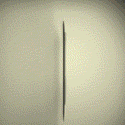
Screenwriter Patrick Wimp gathered an abundance of background material before he began on Public Housing Unit, a story about three police officers who patrol the Chicago projects in the 1980s.
Over the previous year, along with creators Angie Gaffney and Ted Reilly, he had interviewed not only the cops who had worked the public housing beat, but also the people who had called it home.
All told, there was approximately twenty hours of first-hand experiences and observations to go on. In terms of nuance and complexity, it extended deeper than the drama featured in shows like The Wire and Law & Order.
“There was so much there,” Wimp recalls. “Sometimes the stories are hilarious. Sometimes they’re terrifying. Sometimes they’re heartbreaking.”
It was also, thanks to the people who shared their memories, brutally honest.
The cops, whose relegation to the Public Housing beat was something of an unofficial banishment from the department, described a culture of corruption that surprised him for its “depths and totality.”
“Not to say that it is prevalent, but it did exist at all levels,” Wimp continues. “They were honest and up front about some of the more questionable things that happened, because they would never cross that line.”
The former tenants recalled a time and place that sounds like home.
“In Cabrini, there was a sense of community,” he says. “It was like ten percent of the people were keeping ninety-percent of the people hostage, but they still have this fondness for it.”
Figuring out exactly what and how to incorporate the most relevant material presented a challenge.
Wimp was committed to “an honest portrayal of this stuff” — including the occasionally cynical humor that the police officers displayed while recounting their experiences. But he felt that the typical cops-and-robbers approach wasn’t the right way to go about it.
“There’s kind of a gray area in urban policing,” he explains. “Even in The Wire, which is raw and gritty, there’s still kind of a portrayal of the police officers as heroes.”
One of his inspirations was Alex Kotlowitz’ award-winning 1991 book, There Are No Children Here.
“It’s about two brothers growing up in Chicago’s Henry Horner Homes that I first read when I was in high school,” he says. “I re-read it when I was writing the script.”
The other was a technique that he happened to catch while relaxing in front of the TV.
“I was watching The Big Short,” he recalls. “They had these really kind of interesting 4th wall breaks where people describe to you the housing market.”
Wimp decided to transform certain scenes into slow motion, and then use them as backgrounds for characters who would remain at normal speed while speaking directly into the camera.
Getting it done required multiple outdoor takes with green screens during wintertime, a task that Quriosity Productions’ Felix Piñeiro and Patrick Richter were happy to perform.
“It was freezing polar weather,” says Piñeiro, who not only edited but also worked on set. “Even in our holding locations, you had to wear your parka.”
“It’s always really great to work on projects that you care about,” adds Richter, who produced the post.
Wimp and Hamzah Jamjoom, partners in the Chicago-based media company Digital Hydra, handled VFX and titling.
At the opening of Public Housing Unit, audiences are placed into the middle of a riot. One of the characters turns to the camera and says, “This isn’t going to end well.”
To date, the film has won Best Writer and Best Actress at the Denver Seriesfest, and Best of Fest at the Independent Television Festival in Manchester, VT.
Public Housing Unit screens tonight at the New York Television Festival — 7:45 p.m. EDT, Helen Mills Event Space & Theater, 137-139 W. 26th St. For more information, click here.
CREDITS — PUBLIC HOUSING UNIT
Production Companies: Chicago Media Angels, Black Apple Media, Digital HydraCasting by: Sarah Clark, Compass CastingTheme Composed by: Greg Allan and Ira AntelisMusic by: SonixphereEdited by: Felix PiñeiroCostume Designer: Sarah SharpProduction Designer: Adri SiriwatDirector of Photography: Ross HeranCo-Executive Producers: Claudia Toussas, Nancy and John BuchananExecutive Producers: Kelly Aisthorpe Waller, John WallerProduced by: Angie GaffneyStory by (based on): Eric Davis, Jimmy Marbn, Charlie ToussasCreated by: Ted Reilly, Patrick Wimp, Angie GaffneyWritten by: Patrick WimpDirected by: Daniel Willis










